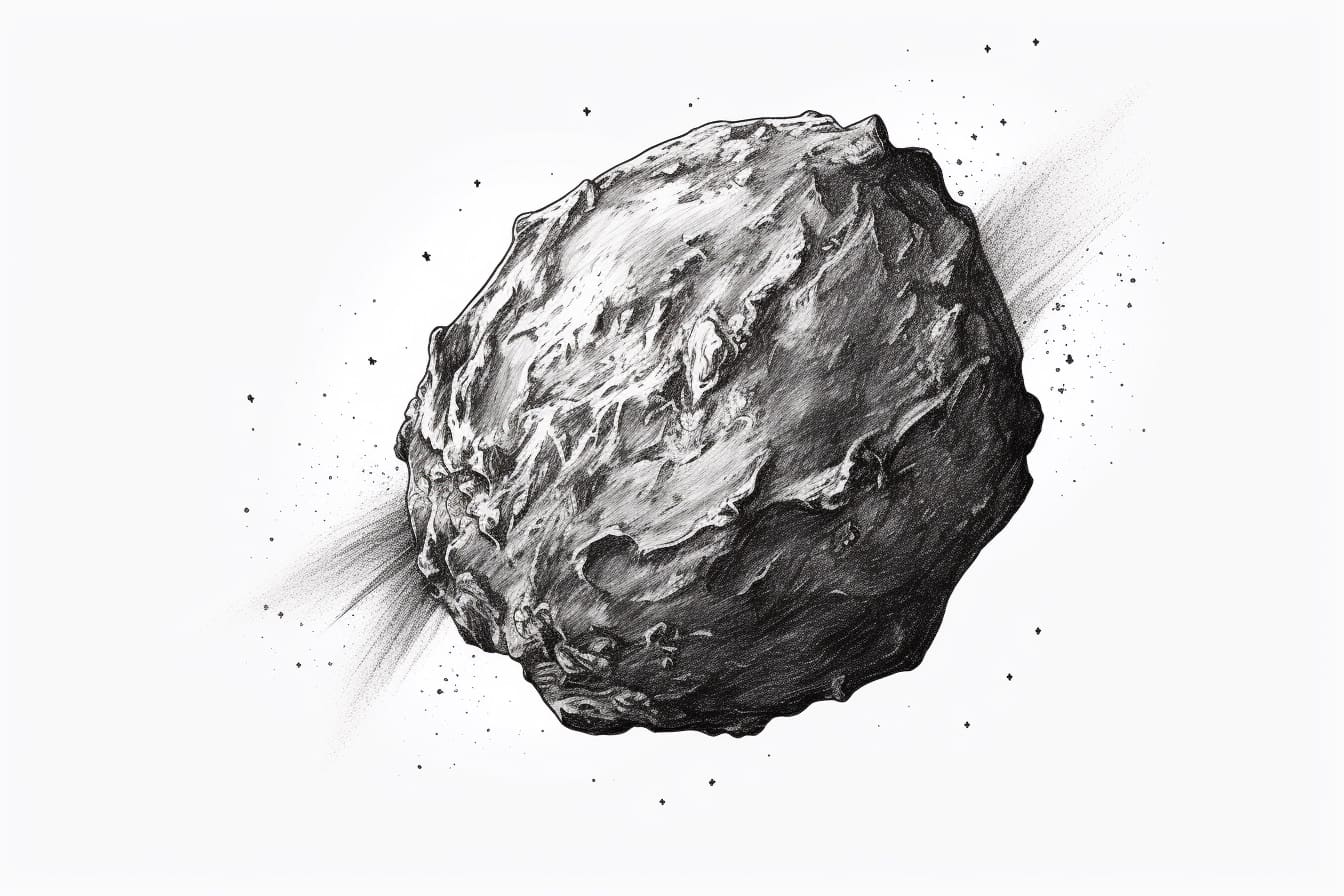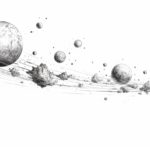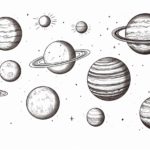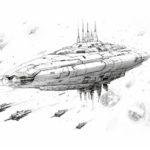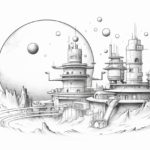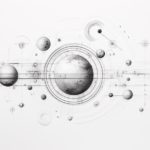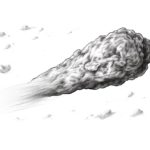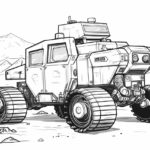Drawing Asteroid can be both a challenging and rewarding experience. Asteroids, those mysterious and captivating celestial bodies wandering through the vastness of space, have inspired artists and astronomers alike for centuries. Capturing the intricate details and otherworldly beauty of an asteroid on paper requires a keen eye for observation and a steady hand. In this guide, we will explore the techniques and tips to help you bring these cosmic wonders to life through the art of drawing. So grab your pencils, sharpen your skills, and get ready to embark on a creative journey through the depths of space as we delve into the art of drawing Asteroid.
Materials Required
To draw an asteroid, you will need the following materials:
- Drawing paper or sketchbook
- Pencil (preferably a set of pencils with different hardness for shading)
- Eraser (preferably a kneaded eraser for easy adjustments)
- Sharpener
- Fine tip black marker or pen (optional for outlining)
- Reference images of asteroids for inspiration and accuracy
These basic materials will help you create a realistic and detailed drawing of an asteroid. Feel free to add colored pencils or other media if you want to add more details or color to your drawing.
How to Draw an Asteroid: a Step-by-step Guide
Step 1: Gather Your Materials
- Get a pencil, eraser, paper, and any coloring materials you may want to use for your drawing.
Step 2: Sketch the Basic Shape
- Start by lightly sketching a rough circle or oval shape on your paper to represent the asteroid.
Step 3: Add Texture and Details
- Asteroids have a rugged and rocky surface, so begin adding jagged lines and irregular shapes to create a textured appearance on the surface of the asteroid. This will give it a more realistic and three-dimensional look.
Step 4: Define Shadows and Highlights
- Determine the direction of your light source (e.g., top left) and add shading to the opposite side of the asteroid to create shadows. Use your pencil to add darker tones to these areas.
- Leave some areas lighter to represent highlights and reflections on the surface of the asteroid.
Step 5: Refine the Details
- Take your time to refine the texture and details of the asteroid. Add more intricate lines and shapes to enhance its rocky appearance. You can also vary the thickness and darkness of your lines to create depth.
Step 6: Finalize Your Drawing
- Once you are satisfied with the overall look of your asteroid, go over your lines with more pressure to make them bolder and cleaner.
- Erase any remaining guidelines and unnecessary marks to reveal the final drawing of the asteroid.
Step 7: Optional Coloring
- If you wish to add color to your drawing, use colored pencils, markers, or other coloring materials to enhance the appearance of the asteroid. Consider using shades of gray, brown, or even metallic colors to give it a more realistic look.
Step 8: Add Background (Optional)
- To complete your drawing, you can add a simple space background with stars or other celestial elements to enhance the overall composition and make your asteroid stand out.
Step 9: Final Touches
- Take a step back and review your drawing. Make any final adjustments or additions to ensure that your asteroid drawing looks visually appealing and realistic.
Conclusion
In conclusion, drawing an asteroid can be both challenging and rewarding. By following the steps outlined in this article, artists can create realistic and detailed depictions of these celestial objects. Remember to practice patience and attention to detail, as capturing the unique textures and shapes of asteroids requires careful observation and skillful execution. With dedication and practice, artists can master the art of drawing asteroids and expand their artistic abilities in the realm of space and astronomy.
Fun Facts About Asteroids
- Asteroids are rocky objects that orbit the Sun, mostly found in the asteroid belt between Mars and Jupiter.
- The largest asteroid in the asteroid belt is Ceres, which is classified as a dwarf planet due to its size.
- Asteroids are remnants from the early solar system and can provide valuable information about the formation and evolution of our solar system.
- Some asteroids have moons or companions orbiting around them, making them unique in their own right.
- NASA has a mission called OSIRIS-REx, which successfully collected a sample from an asteroid named Bennu and will return it to Earth for further study.
- Asteroids come in various shapes and sizes, with some being irregularly shaped and others resembling more spherical objects.
- There are different types of asteroids, including C-type (carbonaceous), S-type (silicaceous), and M-type (metallic), each with its own composition and characteristics.
- Asteroids have impacted Earth in the past, with some causing mass extinctions and shaping the course of evolution on our planet.
- Scientists are studying ways to potentially deflect or redirect asteroids that may pose a threat to Earth in the future.
- Some asteroids contain valuable resources such as water, metals, and minerals, which could be mined in the future for space exploration and colonization efforts.
Suggestions for Scenes and Settings for Asteroid Drawings
- Asteroid mining colony: Imagine a bustling colony built on a large asteroid, with futuristic buildings, mining equipment, and spaceships coming and going.
- Asteroid belt exploration: Picture a small spacecraft weaving through a dense asteroid belt, with various shapes and sizes of asteroids surrounding it.
- Asteroid impact: Depict the dramatic moment of an asteroid colliding with a planet, capturing the intense energy and destruction of the impact.
- Asteroid surface expedition: Illustrate a team of astronauts exploring the rocky and rugged surface of an asteroid, equipped with advanced technology and tools.
- Asteroid habitat: Create a concept drawing of a self-sustaining habitat built inside a hollowed-out asteroid, with artificial gravity and lush greenery.
- Asteroid mining operation: Show a team of workers extracting valuable resources from an asteroid, with machinery and drills in action against the stark background of space.
- Asteroid crater landscape: Draw a serene scene of an asteroid crater filled with reflective pools of water, surrounded by towering cliffs and alien plant life.
- Asteroid base under attack: Imagine a high-stakes battle scene as a hostile alien force attacks a human outpost on a remote asteroid, with explosions and laser beams lighting up the sky.
- Asteroid rendezvous: Illustrate a spacecraft docking with a massive asteroid for a scientific mission or to deliver supplies, showcasing the vastness and beauty of space.
- Asteroid chase: Create a dynamic composition of two spaceships engaged in a thrilling chase through a field of asteroids, dodging obstacles and racing towards their goal.

